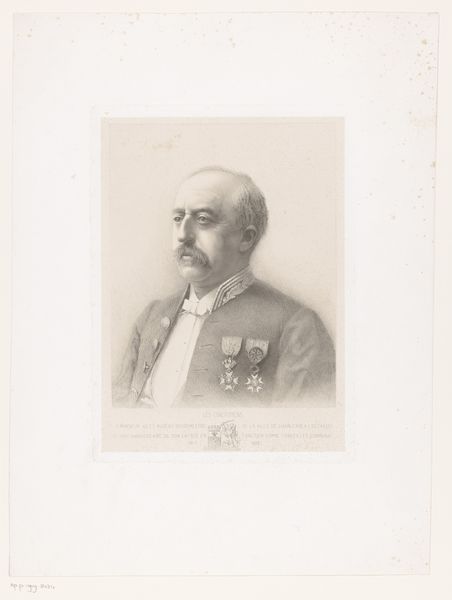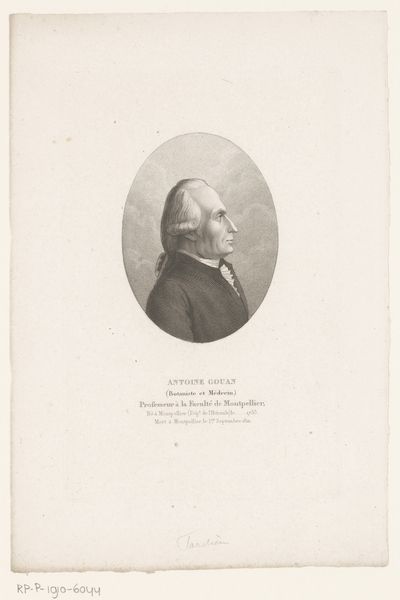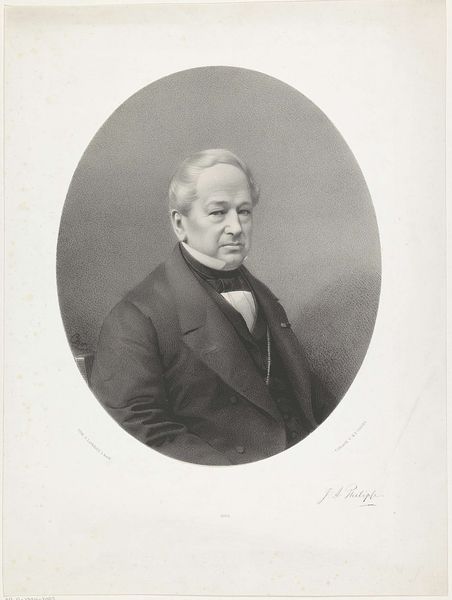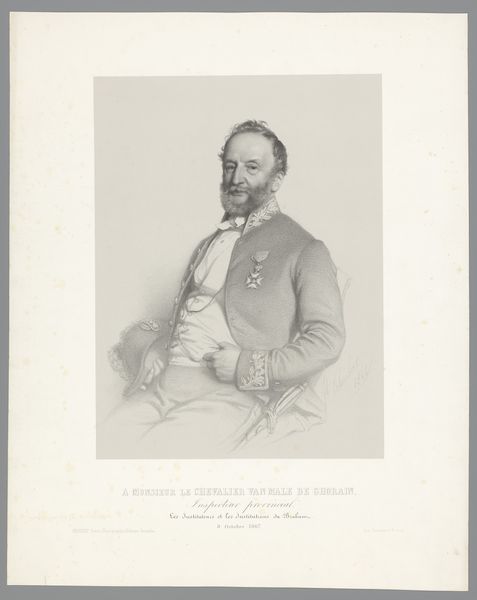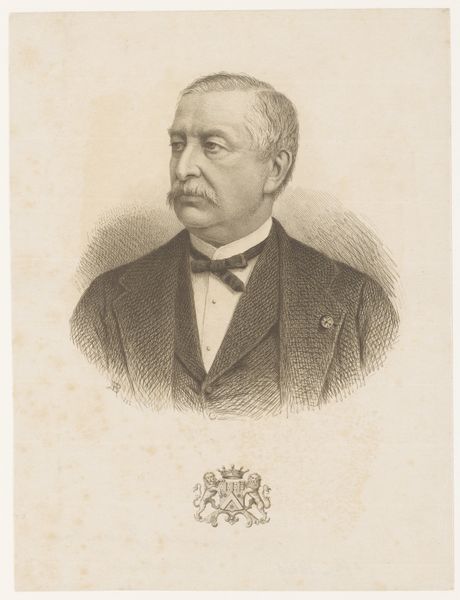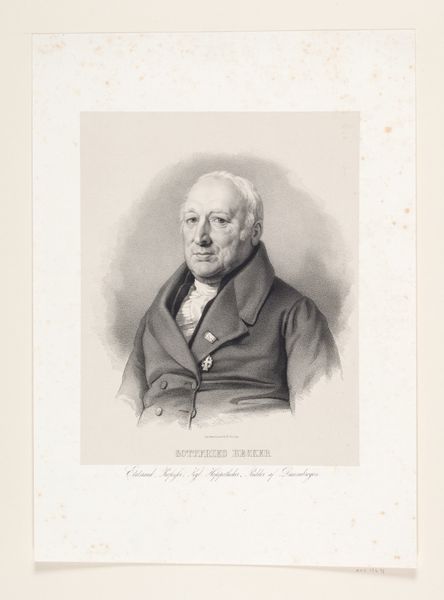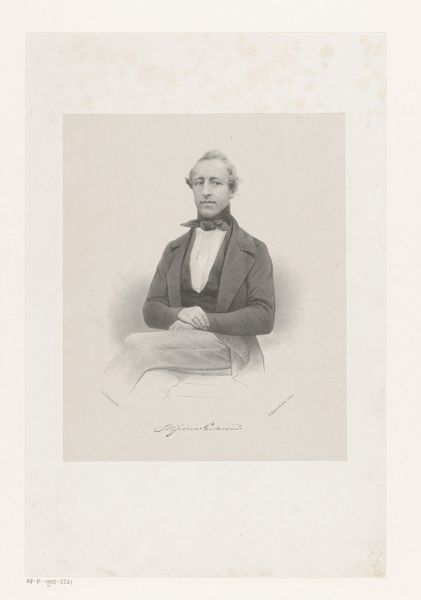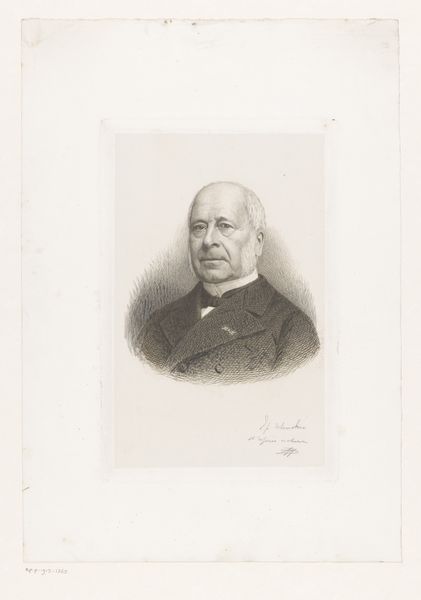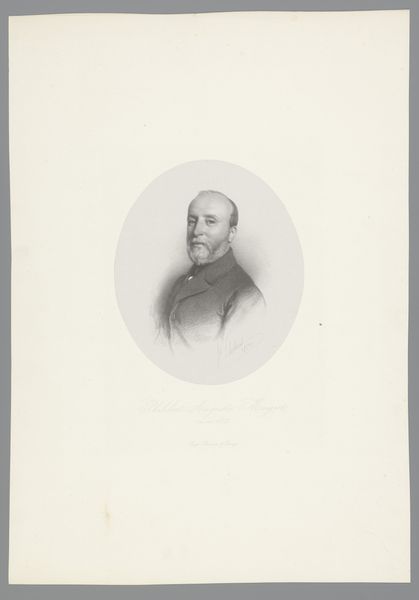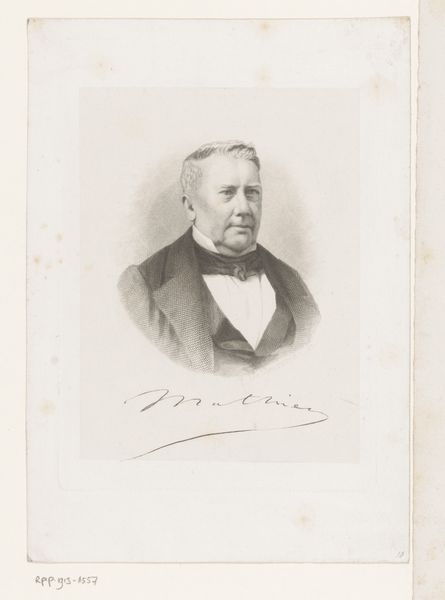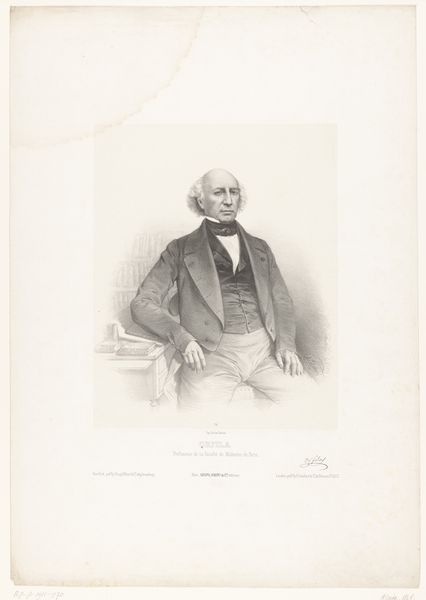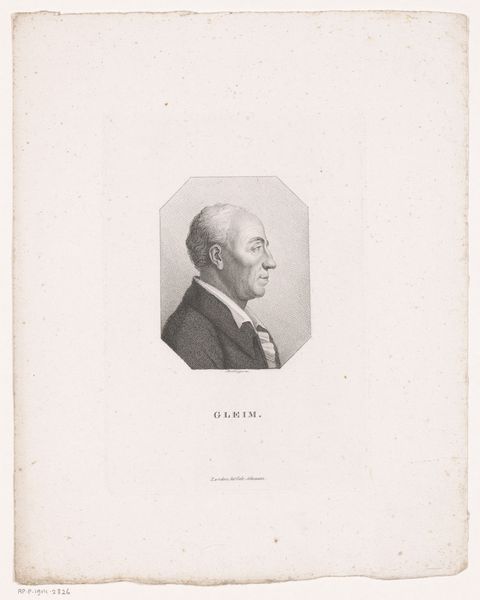
graphic-art, lithograph, print
#
graphic-art
#
lithograph
# print
#
history-painting
#
realism
#
monochrome
Dimensions: 490 mm (height) x 349 mm (width) (bladmaal), 264 mm (height) x 210 mm (width) (billedmaal)
Editor: Here we have "Pontus Delagardie," a lithograph by Johan Christian Emil Hassel, created sometime between 1834 and 1914. The monochromatic print has this official, almost stately, feeling. How would you interpret this work? Curator: This piece is intriguing, particularly when viewed through a historical lens. Consider the role of portraiture in solidifying power structures. How does the choice of lithography, as a readily reproducible medium, impact the distribution and reception of Delagardie's image? Editor: That’s a good point about lithography. It’s interesting to think about how accessible this image would have been. What about the way he’s presented? The medal, the suit, the formal pose… Curator: Exactly. These details aren't accidental. They are deliberate choices reinforcing Delagardie’s status and role in society. Consider the institutions that commissioned and circulated images like this - were they governmental, military, or perhaps tied to specific social clubs? This imagery works to manufacture consent, shaping public perception. Editor: So it’s not just about capturing a likeness, but also about constructing a certain kind of narrative. Curator: Precisely. Think of how these portraits were displayed, in what settings, and who was intended to view them. Understanding the context of its display gives us insight into the cultural values it promoted. Even the act of naming the piece directly impacts how audiences are supposed to perceive the subject, as well. What do you make of that? Editor: I never considered the layers of historical weight portraits can carry. I’ll definitely be thinking about the power dynamics behind these images moving forward. Curator: Indeed. By analyzing the social and political functions of this work, we uncover the complex relationship between art, power, and the construction of historical narratives.
Comments
No comments
Be the first to comment and join the conversation on the ultimate creative platform.
